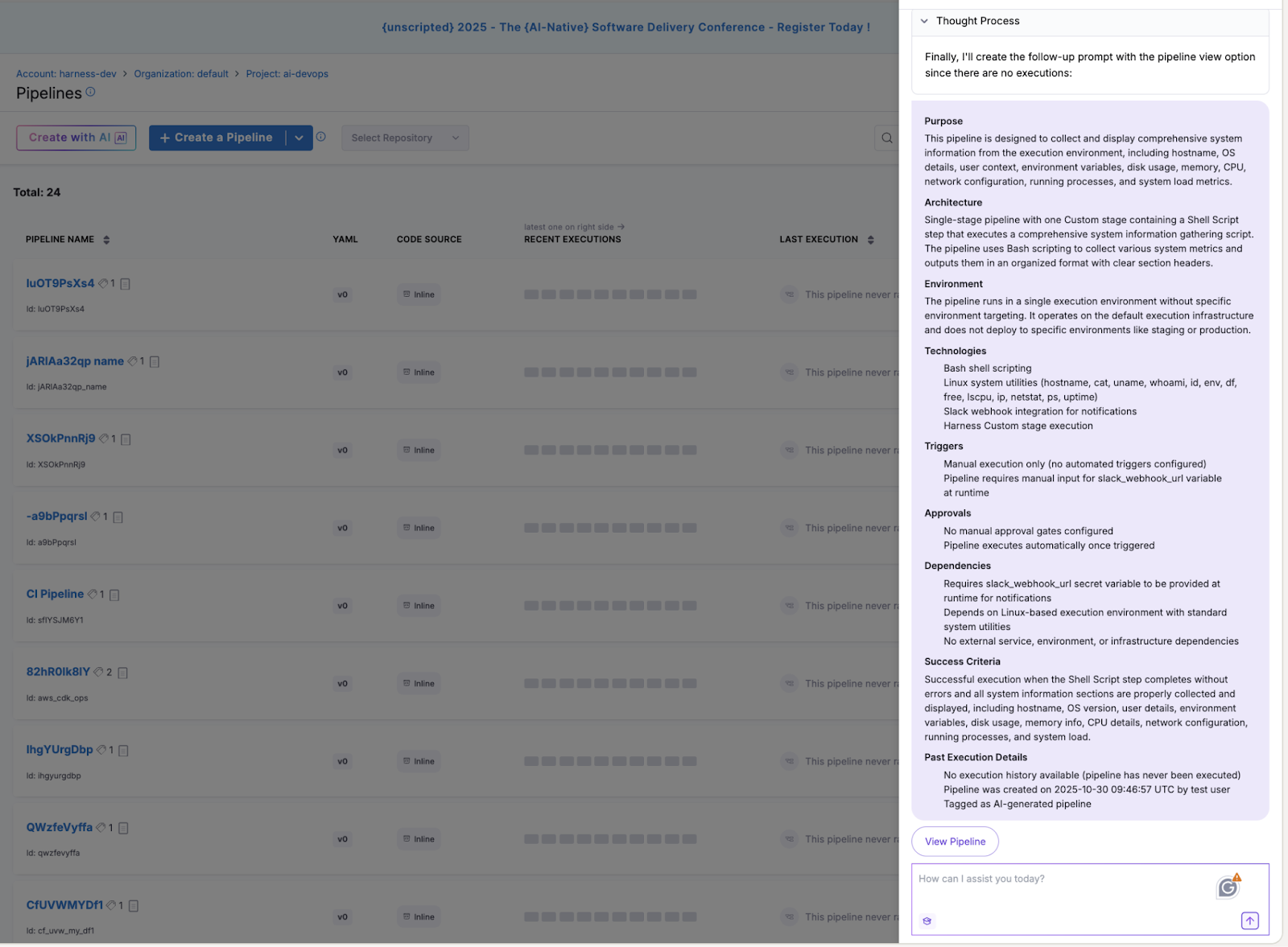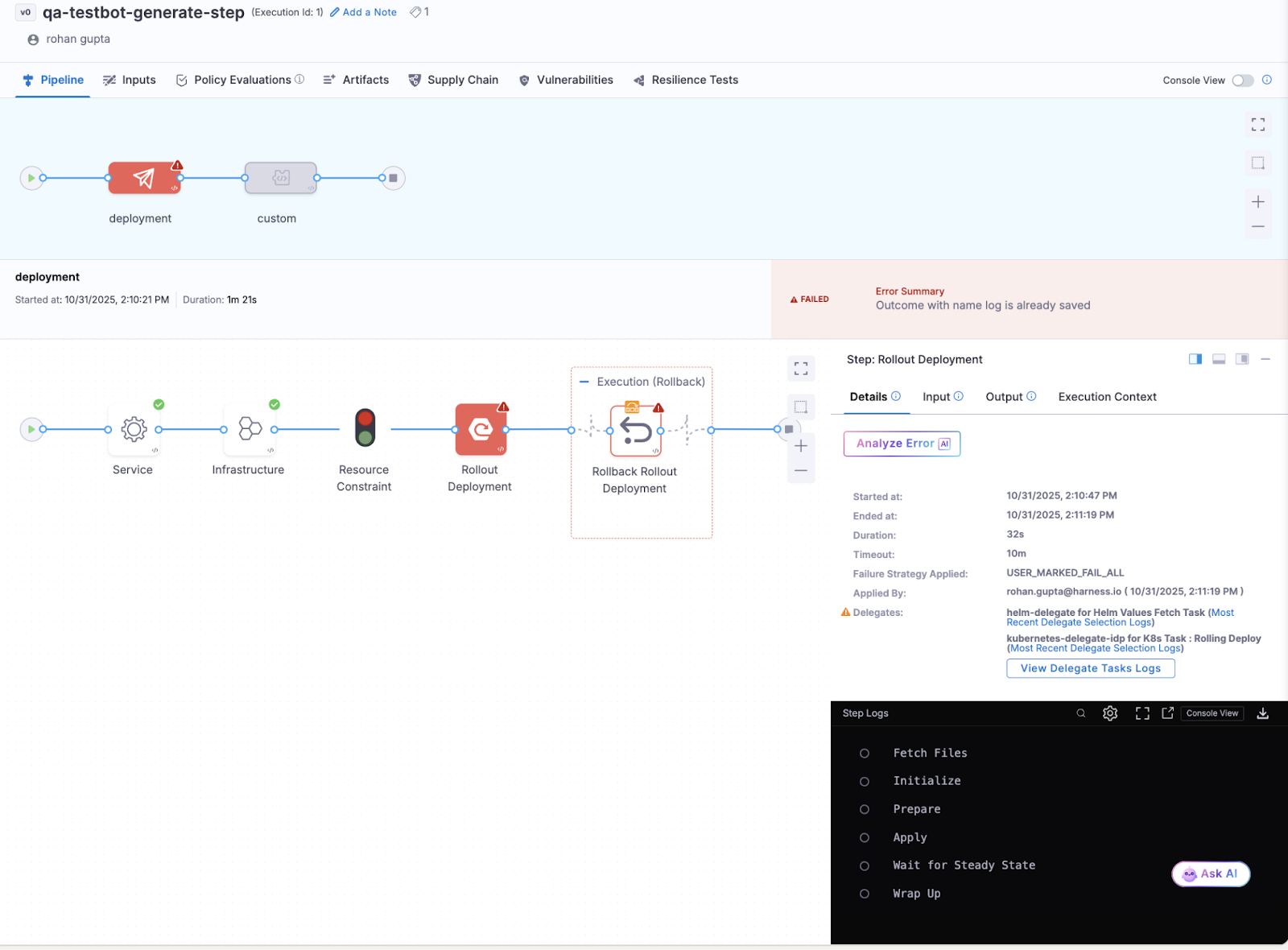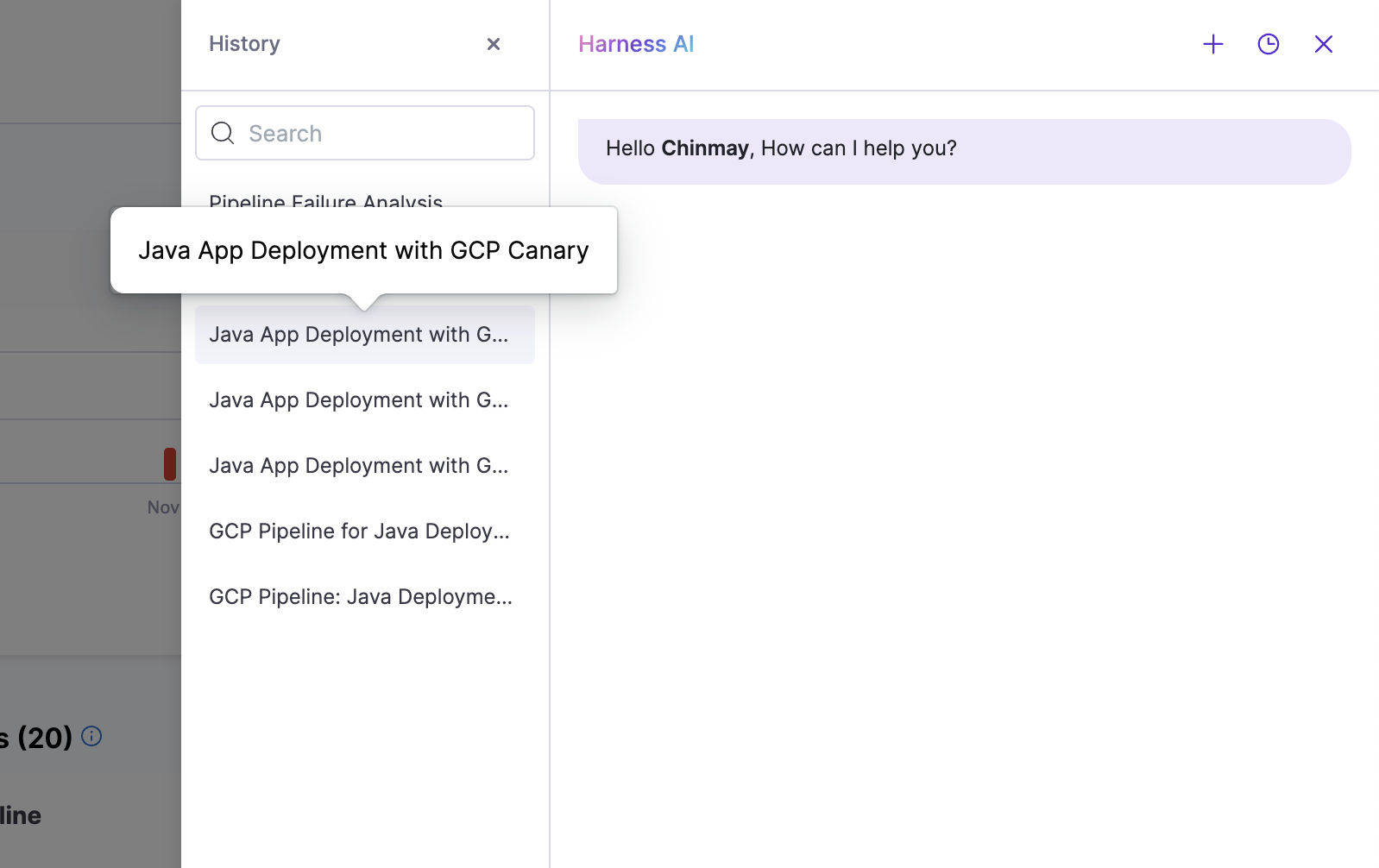.png)
The AI Velocity Paradox is real. While teams are writing code faster than ever, they're hitting a wall downstream. Deployments are failing. Security vulnerabilities are slipping through. Manual toil is eating up whatever time developers saved with AI-assisted coding. The speed boost from one part of the software delivery lifecycle is being strangled by legacy processes in another.
Harness is solving this the only way that works: by bringing intelligent AI deeper into the delivery process itself.
Last quarter, we introduced transformative updates to Harness AI that address the exact problem plaguing most organizations: understanding complex pipelines, troubleshooting failures in seconds instead of hours, and building persistent AI memory to evolve alongside your team's workflows.
The Problem We're Solving: When Code Moves Faster Than Your Pipeline
Here's what we're seeing in the field: teams adopting AI for coding are experiencing a 25% increase in adoption, but Google's DORA research tells us the uncomfortable truth — that AI adoption is actually decreasing delivery stability by 7.2% and throughput by 1.5%. Why? Because the downstream bottleneck is real.
Developers can generate code in minutes. But when that code hits a pipeline, they run into walls:
- Complex pipelines that nobody fully understands, documented only in institutional memory
- Deployment failures that require hours of digging to understand what actually went wrong
- No continuity between troubleshooting sessions, forcing teams to restart their investigation each time
October has been a busy month for us as we released a bunch of updates to bring intelligent automation to everything after the code is written, exactly where teams need it most.
Pipeline Understanding: AI That Actually Knows What Your Pipelines Do
Harness AI now automatically analyzes your most complex pipelines and summarizes what they do, why they exist, what stages matter, and how they're connected. No more hunting through YAML. No more waiting for the one person who understands the legacy pipeline configuration.
This is about velocity without the toil. When a new developer joins, they can understand pipeline design in minutes, rather than days. When you're troubleshooting a failure, you immediately know which stages are relevant and why. When you optimize your delivery process, you gain clarity on what each pipeline actually does.
The impact: Faster comprehension of pipeline design and intent without digging through multiple configurations. Teams spend less time context-switching and more time shipping.

Conversational Troubleshooting: Chat Your Way Out of Failures
Ask Harness AI why your deployment failed. Not a generic error code. An actual conversation.
"Why did this deployment fail?"
"How do I fix it?"
"What changed between the last successful deployment and this one?"
The enhanced Error Analyzer now supports natural language interactions across more stage types. Instead of squinting at logs and error messages, you're having a dialogue with an AI that understands your pipeline, your errors, and how to resolve them. The AI provides instant, contextual explanations that get to the root cause.
The impact: Root-cause analysis that takes hours becomes a conversation that takes minutes. Time-to-resolution drops dramatically. Teams spending 40%+ of their time on toil suddenly have hours back to focus on actual innovation.


Chat History and Memory: AI That Remembers, So You Don't Have To
Harness AI now supports chat history, enabling teams to organize conversations, revisit past troubleshooting sessions, and maintain context between interactions. This is similar to the AI IDE experience, but for DevOps. It's the difference between a helpful chatbot that forgets everything and an AI teammate that learns alongside you.
The impact: Continuous context, smarter collaboration, and evolving intelligence that gets better the more your team uses it. Teams aren't restarting investigations from scratch. Memory compounds over time.

Harness CD Update: AI Verification and Rollback Gets Smarter
We've also enhanced Harness Continuous Delivery with AI verification and rollback capabilities. New integration with Dynatrace Grail, an increasingly popular logs platform, means teams using Grail can now connect it directly to Harness, triggering automatic rollback on abnormal log telemetry after a deployment.
This closes the loop on the Velocity Paradox. Code moves fast. Verification is intelligent and automated. When something goes wrong, the system acts before customers notice.

MCP Updates: Building the Foundation for Agentic Automation
Our Model Context Protocol (MCP) server is evolving with expanded Feature Management and Experimentation (FME) toolset capabilities, laying the groundwork for even deeper agentic automation across the platform. This is how AI teams get integrated into your existing workflows, not as replacements, but as force multipliers. Learn more about using this toolset with Claude Code.
Harness IDP Update: Smarter Worklows
In case you missed it, we also announced the IDP Knowledge Agent at our Unscripted conference. The Knowledge Agent is now available and resides within the Harness IDP, serving as an AI-powered teammate. It helps developers find the information they need, understand how systems work, and take action faster. You can ask questions like, “Who owns the authentication service?” or “How can I improve my score?” and get relevant, trustworthy answers in seconds. Learn more about the Knowledge Agent in this blog post.
Why This Matters: AI Isn't Just About Speed
The worst trap organizations fall into is measuring AI by how fast developers can code. That's missing the entire point.
AI's real value is in the systems. It's in understanding complexity that humans can't easily parse. It's in eliminating repetitive troubleshooting. It's in the memory that builds over time, making teams smarter with every deployment.
Harness AI for DevOps addresses the real problem: the downstream bottleneck that's choking velocity gains from upstream AI adoption.
By bringing intelligent automation to pipeline understanding, instant troubleshooting, and persistent context, we're not just making deployments faster. We're making them safer, smarter, and more resilient. We're turning the Velocity Paradox on its head—ensuring that when code moves fast, everything downstream can keep up.
This is what AI-native software delivery looks like. Not faster chaos. Faster, safer, smarter execution.
What's Next
These updates represent a shift in how Harness approaches AI. We're not adding features. We're solving a fundamental problem in modern software delivery: the gap between upstream speed (code generation) and downstream automation (testing, security, deployment).
The teams winning today aren't the ones with the fastest developers. They're the ones with the most intelligent pipelines. The most resilient deployments. The deepest context about what's actually happening in production.
For everything after the code is written, Harness AI makes that possible.







